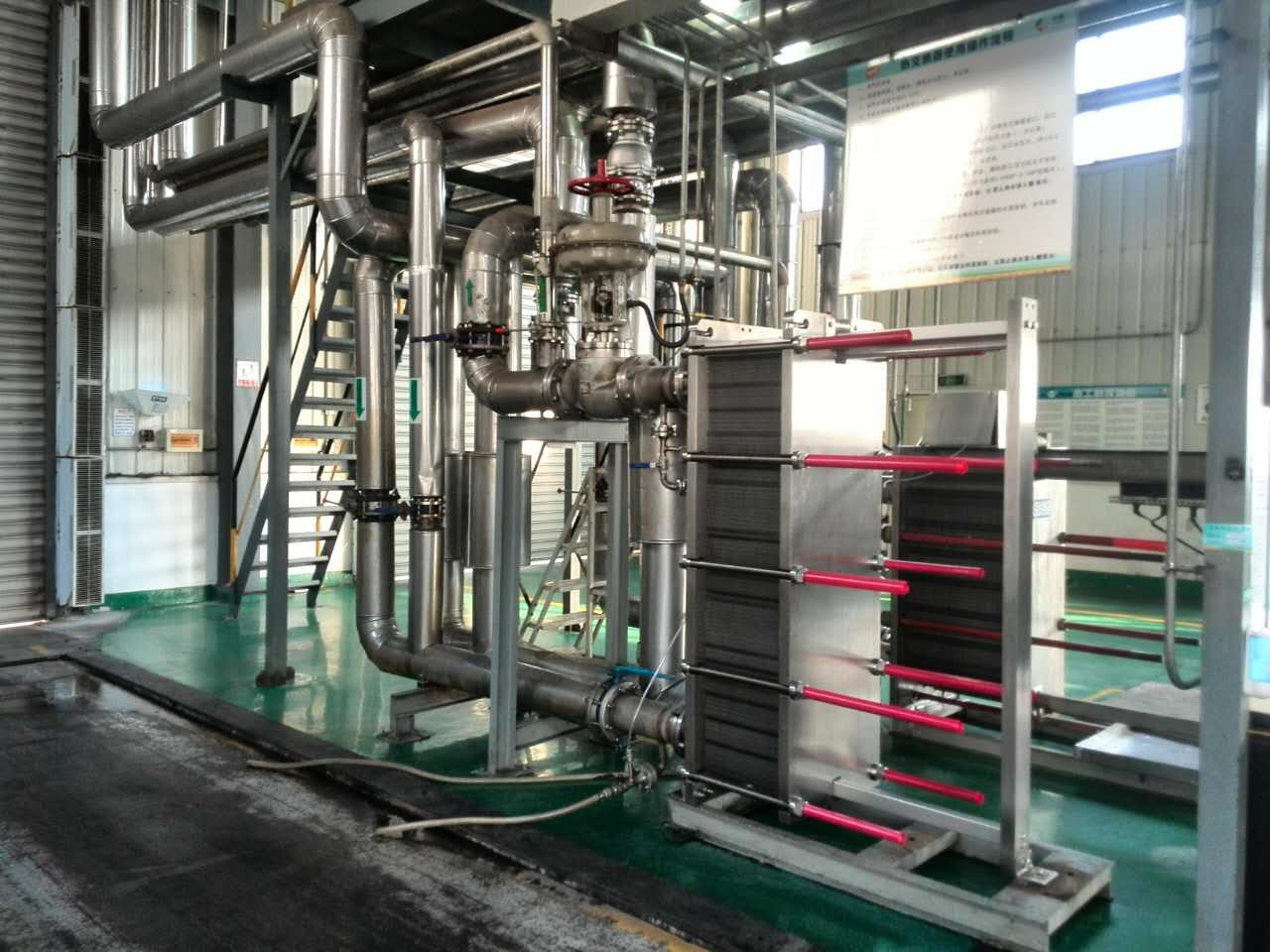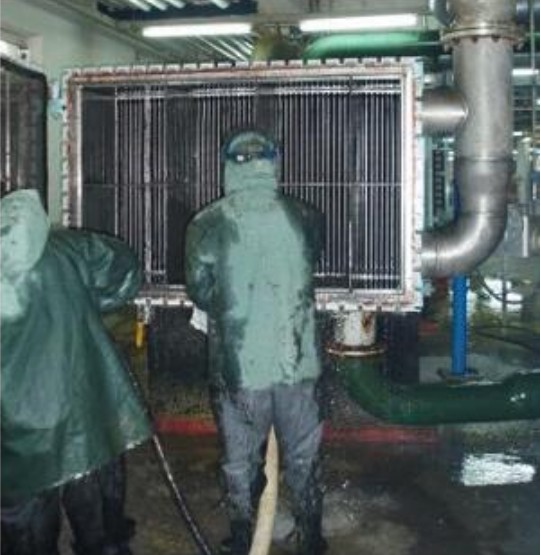Plate Heat Exchanger Applications in Food Processing
Plate heat exchangers deliver high thermal efficiency in food processing, achieving up to 76.23% thermal enhancement in counterflow designs. A gasket type plate heat exchanger or fully welded plate heat exchanger enables precise temperature control while reducing energy use. Many facilities choose a plate heat exchanger for its ability to cut operational costs and improve sustainability.

Pasteurization and Sterilization
Heat exchangers play a vital role in pasteurization and sterilization. These systems enable rapid heating and cooling, which preserves product quality and reduces processing time. Their corrugated plates create turbulent flow, increasing heat transfer rates and minimizing energy use.
Food processors rely on heat exchangers to meet strict time-temperature requirements, ensuring microbial safety without damaging nutritional value. The hygienic design supports easy cleaning and maintenance, preventing fouling and maintaining efficiency.
Continuous pasteurization systems using compact plate heat exchangers help maintain throughput and product quality, supporting both safety and operational goals.
PHE in Dairy and Beverage Production
Dairy and beverage industries benefit from food grade heat exchangers in several ways. The technology provides precise temperature control and efficient heat recovery, reducing energy waste and operational costs. The following table highlights key applications and benefits:
Application Area | Role and Energy Optimization Benefits |
Milk Pasteurization | Precise temperature control, heat recovery, and cost savings |
Beverage Cooling | Efficient cooling with energy-efficient refrigerants |
Fermentation Processes | Consistent temperature control, reduced energy loss |
CIP Systems | Heat recovery during cleaning, lower water and energy use |
Sustainability Focus | Optimized heat recovery, reduced carbon emissions |
PHE Used in Other Food Processes and Cleaning
Heat recovery plate heat exchangers support a wide range of food processes. They handle fluids with particulates, such as sauces and juices with pulp, and dense mixtures like mayonnaise or syrups. Food manufacturers use them for heating and cooling soups, sauces, and even tempering chocolate.
Rapid Cooling:
After cooking or pasteurization, heat exchangers are employed to quickly cool products like dairy, beverages, and condiments, minimizing the risk of bacterial growth.
Freezing:
Scraped-surface heat exchangers are ideal for ice cream production. They cool the mixture while scraping the freezing surface, preventing ice crystal formation and ensuring a smooth, creamy texture.
Processing Viscous Foods:
Products with high viscosity, such as yogurt, cream, or jam, are heated uniformly using tubular or scraped-surface heat exchangers to maintain consistent quality and texture.
Beverage Processing:
In breweries and soft drink facilities, heat exchangers are vital for controlling temperatures during fermentation, carbonation, and pasteurization, contributing to both product stability and flavor.
Chocolate and Confectionery:
Heat exchangers are essential in processes like chocolate tempering, where they provide precise thermal regulation to achieve the right consistency and prevent unwanted crystallization.
How Plate Heat Exchanger Reduces Energy Use
Efficient Heat Transfer Mechanism
Key features that drive efficient heat transfer include:
· Large surface area in a small volume, enabling high thermal performance.
· Counterflow or crossflow arrangements that allow fluids to exchange heat more effectively.
· Materials like stainless steel, which provide both hygiene and corrosion resistance.
· Modular construction, allowing easy adjustment of capacity by adding or removing plates.
The table below compares the overall heat transfer coefficients of plate and frame heat exchangers with traditional shell-and-tube designs:
Heat Exchanger Type | Overall Heat Transfer Coefficient (W/m²·K) | Overall Heat Transfer Coefficient (Btu/ft²·°F·h) |
Shell and Tube | 150 - 1200 | 25 - 200 |
Plate Heat Exchanger | 1000 - 4000 | 150 - 700 |
This data highlights the much higher efficiency of plate heat exchangers, making them ideal for space-limited food processing facilities that require frequent maintenance and strict hygiene.
Heat Recovery and Reuse in Food Manufacturing
One of the most significant advantages of frame heat exchangers in food manufacturing is their ability to recover and reuse heat. In dairy plants, for example, these systems can achieve heat recovery rates of up to 94% during high-temperature short-time (HTST) pasteurization. This means that nearly all the heat used to warm raw milk is captured and transferred to incoming cold milk, drastically reducing the energy required for heating.
Recovered heat serves multiple purposes across a facility:
· Preheating water for sterilization and cleaning, which reduces the energy needed for these processes.
· Generating steam for distillation, drying, and autoclaving, lowering reliance on boilers.
· Recirculating heat within processes to preheat air or fluids, minimizing waste.
· Providing space heating for cleanrooms and storage areas, cutting additional energy use.
· Supplying hot water for employee facilities, contributing to cumulative energy savings.
Compact plate heat exchangers offer up to 25% more energy savings compared to traditional shell-and-tube exchangers, thanks to their higher heat transfer efficiency and smaller footprint.
Reduced Processing Time and Costs
Industry benchmarks indicate that adopting plate heat exchangers can reduce power costs by up to 30%. Improved regeneration rates in milk pasteurization systems alone can save manufacturers over $10,000 or more annually.
Food manufacturers also benefit from long-term operational efficiency improvements. Advanced heat recovery systems can utilize up to 85% of waste heat, while smart temperature control system and modular designs support sustainability and regulatory compliance. These factors make plate heat exchangers a strategic investment for any food processing facility focused on energy efficiency and cost reduction.
Summary: Benefits of Applying Compact PHE in Food
Processing
Food manufacturers gain significant benefits by adopting a plate heat exchanger.
· Innovative plate designs reduce raw material use and energy consumption, supporting sustainability goals.
· Hygienic construction and stainless steel materials ensure reliability and easy cleaning.
· Smart monitoring systems and compact designs help meet strict regulations and future industry demands.
FAQs
Can plate heat exchanger improve food safety?
Plate heat exchangers deliver precise temperature control. This accuracy helps processors meet strict food safety standards and prevent harmful bacteria growth during heating and cooling.
Can plate heat exchangers handle products with particulates?
Yes. Plate heat exchangers process fluids with pulp, seeds, or small particles. Their design supports sauces, juices, and soups without clogging or loss of efficiency.

What maintenance do plate heat exchangers in food manufacturer require?
· Regular inspection of gaskets and plates
· Scheduled cleaning using water gun or CIP systems
· Periodic performance checks to ensure optimal heat transfer and hygiene
If you need further consultation and discussion, please feel free to contact us.
Email: info@shphe.com
WhatsApp /Cell: +86 15201818405





